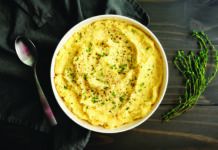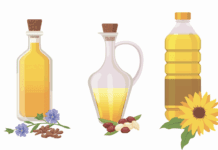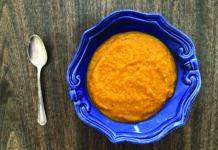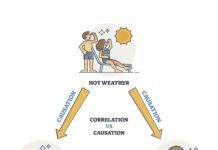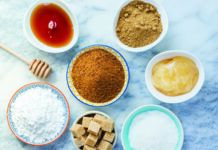A. Nicola McKeown, PhD, director of TuftsNutritional Epidemiology Program, explains:Whole grains include many different grains,such as wheat, corn, rice, oats, barley, quinoa,sorghum, spelt and rye. These grains are calledwhole if they are not milled into refined grainversions. For instance, whole wheat bread is awhole grain food, but if a bread label states onlywheat bread it is, in fact, NOT a whole grain butrather a refined wheat product. Labels typicallywill not include the word refined to describe agrain; therefore the absence of the word wholeindicates that the grain is refined. This is confusingfor consumers. So, when youre readingingredients labels, make sure the label stateswhole grain [name of grain], or whole wheat,or whole rye, etc. Of course, the closer to thetop of the ingredients list, the more of the grainit contains.I have read that organic breads containmore whole grains compared to conventionalwhole wheat bread and that there are approximately3% more preservatives/additives intraditional whole wheat bread as compared withorganic. To my knowledge, there is otherwiseno research indicating that organic whole grainsare more nutritious than conventional wholegrains-although there may be other environmentalbenefits of organic farming. Of course,one has to look at the label to determine if theproduct has the USDA organic seal. To earn thisseal, a product must contain at least 95% organicingredients by weight (not counting wateror salt). If a bread states, made with organicingredients, it must contain at least 70% organicingredients by weight. Personally, I choose awhole wheat organic bread.
- #7213 (no title)
- About
- Cart
- Checkout
- Contact the Editor
- Contact Us
- Content restricted
- Customer Service
- Glossary
- Nutrition 101 – Glossary – J
- Nutrition 101 – Glossary – K
- Nutrition 101 – Glossary – L
- Nutrition 101 – Glossary – M
- Nutrition 101 – Glossary – N
- Nutrition 101 – Glossary – O
- Nutrition 101 – Glossary – P
- Nutrition 101 – Glossary – Q
- Nutrition 101 – Glossary – R
- Nutrition 101 – Glossary – S
- Nutrition 101 – Glossary – T
- Nutrition 101 – Glossary – A
- Nutrition 101 – Glossary – B
- Nutrition 101 – Glossary – C
- Nutrition 101 – Glossary – D
- Nutrition 101 – Glossary – E
- Nutrition 101 – Glossary – F
- Nutrition 101 – Glossary – G
- Nutrition 101 – Glossary – H
- Nutrition 101 – Glossary – I
- Nutrition 101 – Glossary – U
- Nutrition 101 – Glossary – V
- Nutrition 101 – Glossary – W
- Nutrition 101 – Glossary – X
- Nutrition 101 – Glossary – Y
- Nutrition 101 – Glossary – Z
- Manage Email
- My Account
- OFIE – Subscriber only
- Online Account Activation
- Privacy Policy
- Products
- Products
- Register
- Register
- Registration Complete
- Registration Complete
- Sample Page
- Settings
- Subscribe
- Subscribe Now
- Tufts & Health Nutrition
- Tufts & Health Nutrition | JH Inforce
- Tufts & Health Nutrition | JHV Employee
- Tufts & Health Nutrition | John Hancock
- Tufts & Health Nutrition | Manulife Asia
- Tufts & Health Nutrition | Manulife Vitality
- Tufts & Health Nutrition | NU101
- Tufts & Health Nutrition | Tufts Employees
Copyright 2020 Tufts University Health & Nutrition Letter

